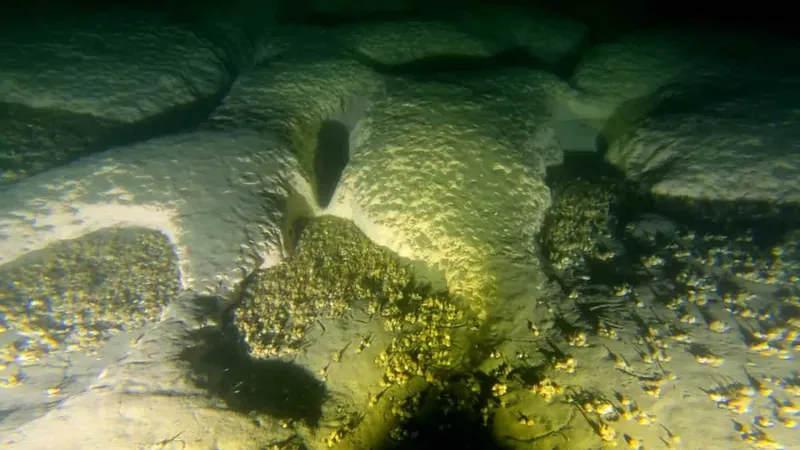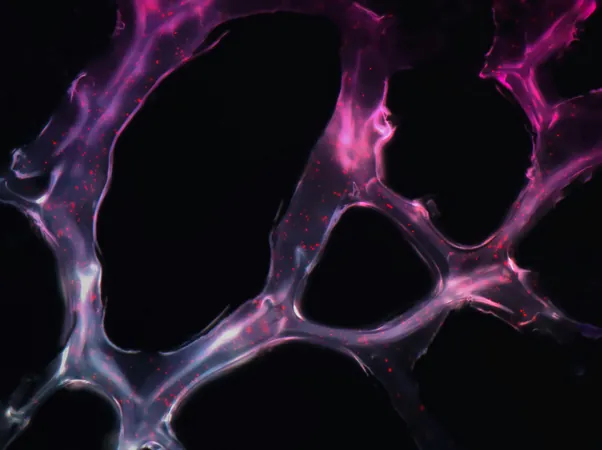
Mysterious Craters Discovered in Lake Michigan: What They Could Mean for the Lake’s Future!
2024-09-28
Author: Li
Introduction
In a groundbreaking discovery beneath the waves of Lake Michigan, scientists have identified dozens of large craters that have sparked intrigue among researchers and the public alike. These unusual formations were first mapped by scientists during an expedition in 2022 within the boundaries of the Wisconsin Shipwreck Coast National Marine Sanctuary, but it took two years to uncover their true nature.
Discovery Details
During their explorations, researchers, led by maritime archaeologist Russ Green, noticed these mysterious circles on sonar images. Initially considered to be depressions on the lakebed, the team sought confirmation about their origins. Local shipwreck expert Brendon Baillod, who keenly observed these formations, estimated that the craters could measure between 20 to 40 feet (approximately 6 to 12 meters) in depth. "There were dozens of them in our search grid," he remarked.
Investigation and Findings
To further investigate, the team collaborated with experts from the National Oceanic and Atmospheric Administration's (NOAA) Great Lakes Environmental Research Laboratory (GLERL). They deployed a remotely operated vehicle to conduct underwater examinations, and the findings confirmed their suspicions: these formations are indeed massive, naturally occurring craters, with a confirmed count of roughly 40, although more may remain undiscovered beneath the lake’s surface.
Geological Context
Interestingly, similar depressions have previously been identified at the bottom of Lake Huron, which shares its borders with Michigan and Canada. Those depressions turned out to be sinkholes formed by the collapse of the surface layer due to the dissolution of bedrock caused by groundwater. Researchers suspect that the same geological processes could be at play in Lake Michigan, especially given that part of its bedrock consists of limestone, which is susceptible to erosion.
Are They Sinkholes?
However, the question remains: are these formations indeed sinkholes? Baillod expresses skepticism, suggesting that the term 'craters' might be more appropriate. He speculates that they could have formed due to phenomena such as water upwelling from below or the off-gassing of trapped hydrocarbons.
Future Research
As no water has yet been detected escaping from these craters, scientists believe there is likely groundwater circulating beneath the lakebed. Ruberg anticipates that further investigations will reveal additional details about these enigmatic structures and their implications for Lake Michigan’s ecosystem.
Conclusion
This exciting discovery prompts further research to gain a deeper understanding of the origins and effects of these craters on the lake’s environment. The team is looking forward to uncovering more secrets from the depths, which could reshape our understanding of Lake Michigan's geological history and its future. Stay tuned; the findings could change everything we know about this vital body of water!

 Brasil (PT)
Brasil (PT)
 Canada (EN)
Canada (EN)
 Chile (ES)
Chile (ES)
 Česko (CS)
Česko (CS)
 대한민국 (KO)
대한민국 (KO)
 España (ES)
España (ES)
 France (FR)
France (FR)
 Hong Kong (EN)
Hong Kong (EN)
 Italia (IT)
Italia (IT)
 日本 (JA)
日本 (JA)
 Magyarország (HU)
Magyarország (HU)
 Norge (NO)
Norge (NO)
 Polska (PL)
Polska (PL)
 Schweiz (DE)
Schweiz (DE)
 Singapore (EN)
Singapore (EN)
 Sverige (SV)
Sverige (SV)
 Suomi (FI)
Suomi (FI)
 Türkiye (TR)
Türkiye (TR)
 الإمارات العربية المتحدة (AR)
الإمارات العربية المتحدة (AR)